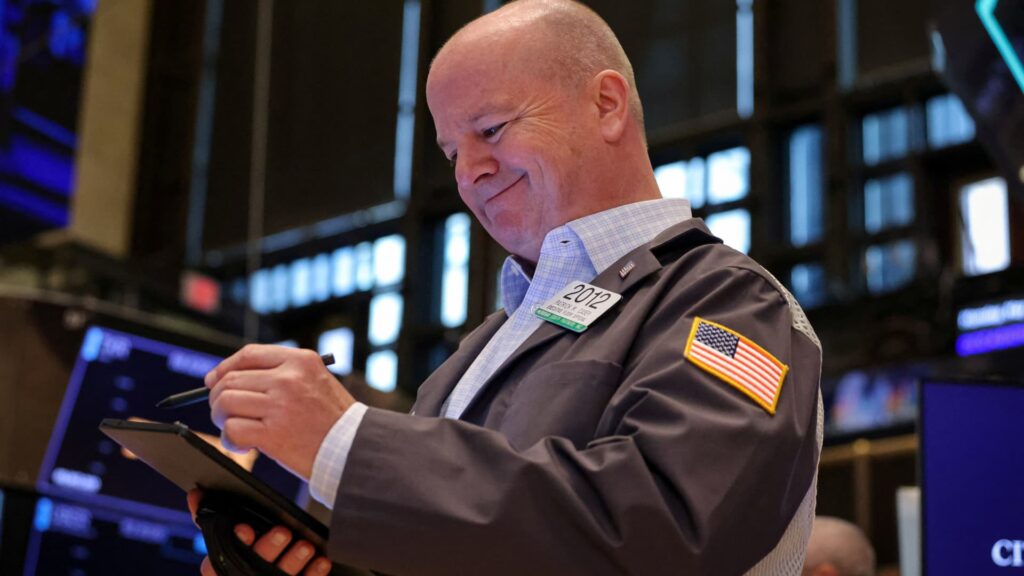A trader works on the floor at the New York Stock Exchange on May 12, 2025.
Brendan McDermid | Reuters
The S&P 500 was higher on Friday and headed for a sharp weekly gain despite the release of disappointing consumer sentiment data.
The broad market index inched up 0.3%, while the Nasdaq Composite gained 0.2%. The Dow Jones Industrial Average gained 98 points, or 0.2%.
Stocks have made a strong comeback since U.S. and Chinese officials earlier this week agreed on a 90-day truce in their tariff measures, which eased investors’ fears of escalating global trade tensions and rising risk to the economy.
Week to date, the S&P 500 is up 4.6%, and the Dow has gained 2.6%. The Nasdaq Composite has jumped more than 6% this week. Both the S&P 500 and Dow closed higher on Thursday, while the Nasdaq fell slightly.
“We believe we are entering a new market regime where volatility will be higher and the mega-cap tech stocks will not simply dominate market performance,” said Scott Welch, chief investment officer at Certuity. “We are not bearish on them, just believe diversification is a smart move right now.”
A weaker-than-expected reading of consumer sentiment put a dent in overall investor enthusiasm on Friday. The University of Michigan’s survey of consumers fell to 50.8 in May, down from 52.2 in April, which is the second-lowest reading ever behind June 2022. Consumer expectations for inflation over the next year jumped to 7.3% from 6.5% last month, as survey respondents continue to signal worry tied to President Donald Trump’s tariffs.
Friday could see an uptick in volatility on Wall Street due to a large amount of options contracts that are set to expire. Goldman Sachs estimated that more than $2.8 trillion of notional options exposure will expire on Friday, the biggest such number on record for a May trading day.
Wall Street is also hoping that there will be more clarity on the trade front in the weeks ahead. President Donald Trump said Friday that his administration will send letters to many countries detailing new tariff rates, possibly over the next two to three weeks. Those letters would take the place of trade negotiations with countries where the U.S. doesn’t have time to meet.

